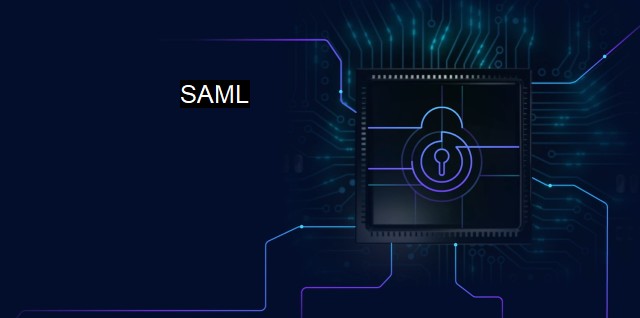What is SAML?
The Importance of SAML in Cybersecurity: An Open Standard for Secure Authentication and Authorization Data Exchange.
Security Assertion Markup Language (SAML) is a protocol for authenticity verification and authorization data sharing thereby allowing seamless exchange of identity information securely across domains. Originating from the Organization for the Advancement of Structured Information Standards (OASIS), it facilitates Single Sign-On (SSO) for applications, which are beyond an organization's boundaries. The context is cybersecurity and antivirus, hence, SAML has a significant role in bolstering the shield against nefarious digital activities.To appreciate the importance of SAML in the cybersecurity and antivirus context, it is essential to understand what it fundamentally does. The authentication process is often a critical weak platform for developing attacks, which places critical systems and data at risk. SAML provides a method of authentication and authorization in a different way than most traditional methods. The heart of SAML is an XML-based protocol that employs security tokens comprising digital signatures, eliminating the need for password exchange to claim identity, thus, enhancing digital security.
The occurrences of fraudulent activities such as phishing via dubious email links are often targeted towards stealing user credentials. SAML brings SSO into the equation, which means users do not need to remember usernames and passwords for a slew of applications. With fewer passwords to manage, the chances of falling victim to phishing attacks significantly reduce. SSO via SAML also mitigates the risk of user credentials being unknowingly exposed to various applications as applications no longer require keeping track of passwords.
SAML blurs the compartmentalization between cybersecurity and antivirus mechanisms and formulates a more composite and robust mechanism for authentication and authorization. Once SAML authentication is triggered successfully, antivirus software can perceive the nature of the web request, assess whether the authorization is appropriately granted, and thus understand if it originates from a genuine source. Subsequently, the chances of potential computer virus infiltrations via crossed web-domain applications are dramatically curbed.
With escalated permission levels, some users may unintentionally unveil harmful malware or viruses into systems. Manually handling such permissions can be time-consuming, costly, and prone to errors. This is where SAML steps in, enhancing permission management by automating the processes. Not only does this alleviate the load on system administrators, but it also enhances overall cybersecurity by standardizing the protocol for the structured exchange of security data.
SAML's open standard feature implies it can integrate smoothly with a range of systems and software employed by organizations within and across their security boundaries. Logins can then be managed more centrally by IT departments rather than relying on multiple third-party providers. This ability has a major upside when considering a cybersecurity perspective as it equates to significantly lower system vulnerabilities.
Being XML-based, SAML information bind to basic standards such as HTTPS, ensuring secure and reliable data transmission. This extended security benefit makes it harder for cyber attackers to intercept or manipulate these transactions. Even if a hacker was to intercept them, decryption of the XML content, brimming with symbolic references rather than plain text, is quite hard without having direct access to the system at large.
In sum, Security Assertion Markup Language (SAML) offers an indomitable authentication and authorization protocol that is crucial in the layered defense of any IT system. It works in tandem with antivirus systems, provides secure SSO services, and safeguards against various threats. While SAML cannot prevent all cyber attacks by itself, it streams as an essential component in the labyrinth of cybersecurity and antivirus measures operating in today's digital era. Its application provides safer web transactions, improves system resiliency, builds authentication trust across different domains, and makes information access more secure. Hence, industries can thrive without the constant threat of their digital network's overall integrity being compromised due to malicious or unintentional activities.

SAML FAQs
What is SAML?
SAML stands for Security Assertion Markup Language. It is an XML-based protocol used for exchanging authentication and authorization data between parties, specifically between an identity provider (IdP) and a service provider (SP).How does SAML support cybersecurity?
SAML supports cybersecurity by enabling secure exchange of authentication and authorization data between parties. As a result, it helps prevent unauthorized access to resources and ensures that only authenticated and authorized users can access sensitive information or systems.What is the role of SAML in antivirus?
SAML does not directly play a role in antivirus, as antivirus software is designed to detect and remove malicious software from a system. However, SAML can be used to enable secure access to antivirus management consoles, thereby ensuring that only authorized personnel can manage antivirus settings and configurations.How does SAML work?
SAML works by establishing a trust relationship between an identity provider (IdP) and a service provider (SP), which allows for the secure exchange of authentication and authorization data. When a user attempts to access a resource or system, the SP redirects the user to the IdP for authentication. Once authenticated, the IdP sends a SAML assertion to the SP, which then grants or denies access based on the contents of the assertion.Related Topics
Single Sign-On (SSO) Identity and Access Management (IAM) Authentication Protocols OAuth OpenID Connect
| | A | | | B | | | C | | | D | | | E | | | F | | | G | | | H | | | I | | | J | | | K | | | L | | | M | |
| | N | | | O | | | P | | | Q | | | R | | | S | | | T | | | U | | | V | | | W | | | X | | | Y | | | Z | |
| | 1 | | | 2 | | | 3 | | | 4 | | | 7 | | | 8 | | |||||||